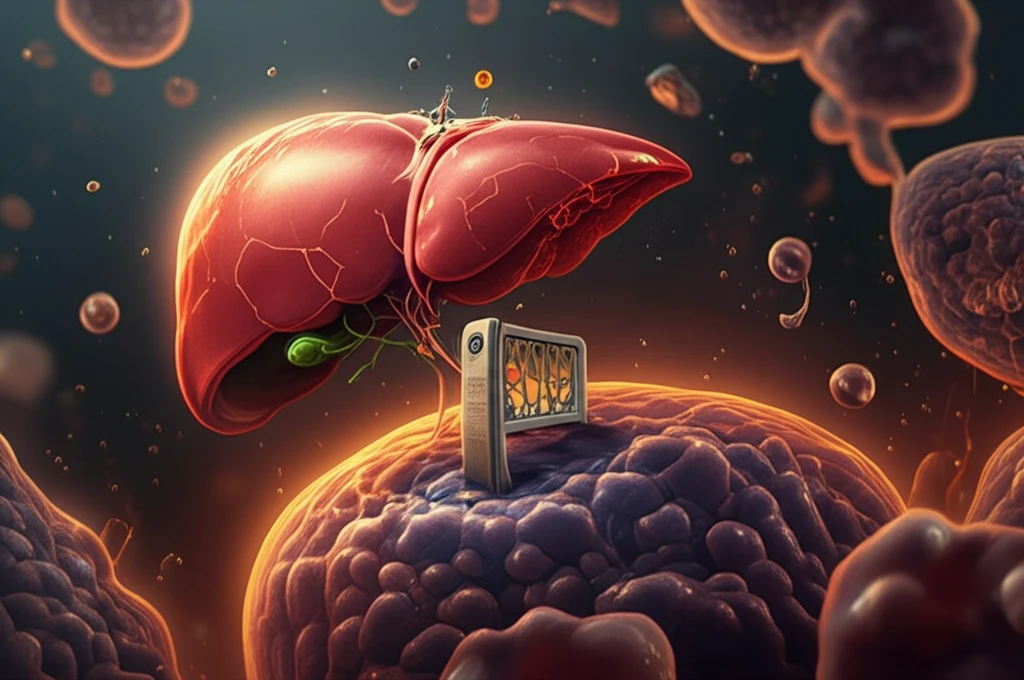
Decoding Fatty Liver Disease: How a Tiny Receptor Could Hold the Key to New Treatments
"Scientists uncover a surprising role for Fc Gamma Receptor IIb (FcyRIIb) in liver health, offering hope for battling NAFLD and improving insulin sensitivity."
Non-alcoholic fatty liver disease (NAFLD) is a growing health concern, characterized by the abnormal accumulation of fat in the liver. This condition is often linked to hepatic insulin resistance and can progress to more severe stages like non-alcoholic steatohepatitis (NASH), cirrhosis, and even hepatocellular carcinoma (HCC).
While the causes of NAFLD are multifaceted, they often involve over-nutrition and obesity, creating a dangerous link between metabolic dysfunction and liver health. Liver damage can lead to serious complications, including hyperglycemia (high blood sugar), hyperlipidemia (elevated blood fats), and type 2 diabetes mellitus (T2DM).
Recent research has focused on the role of Fc-gamma receptor-IIb (FcyRIIb) in metabolic diseases like obesity and T2DM. Although previous studies have primarily examined FcyRIIb in skeletal muscle, its function in the liver and hepatocytes (liver cells) has remained largely unexplored. A new study has identified the expression of FcyRIIb in primary cultured mouse hepatocytes, revealing its potential involvement in lipid and glucose metabolism within the liver.
FcyRIIb: A Key Player in Liver Fat Accumulation and Insulin Resistance?

The recent study delved into how FcyRIIb influences both fat (lipid) and glucose metabolism in liver cells. Researchers observed that FcyRIIb levels increased in hepatocytes in response to oleic acid (OA), a type of fatty acid. Conversely, when FcyRIIb was suppressed using shRNA (a gene silencing technique), the accumulation of lipids and triglycerides in OA-treated HepG2 cells (a human liver cell line) was reduced. The expression of genes involved in lipid synthesis (ACC1, FASn), lipid transport (CD36, MTTP, and ApoB) was also suppressed.
- Reduced Liver Weight and Fat: Mice without FcyRIIb, when fed a high-fat diet, showed significantly lower liver weight and fat accumulation.
- Suppressed Lipid Synthesis Genes: Silencing FcyRIIb reduced the expression of key genes involved in fat production and transport in liver cells.
- Improved Insulin Sensitivity: FcyRIIb deficiency enhanced insulin signaling in the liver, promoting better glucose control.
Hope for Future NAFLD Treatments
This research provides a novel understanding of FcyRIIb's role in regulating lipid and glucose metabolism in the liver. By highlighting its involvement in fat accumulation and insulin resistance, the study suggests that FcyRIIb could be a promising therapeutic target for improving NAFLD and related metabolic disorders. Further research is needed to explore how FcyRIIb can be effectively targeted to develop new treatments for this widespread liver disease.
